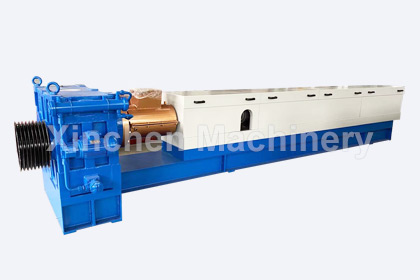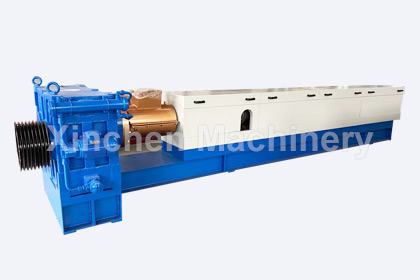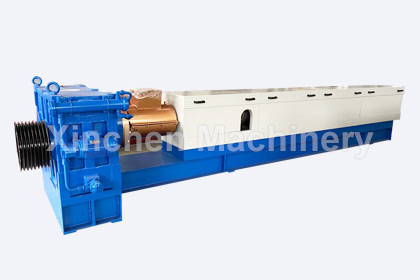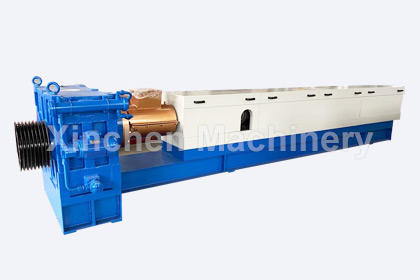Twin screw extrusion machine features
Date:2022-2-23 Author:XCEXTRUSION
There are many types of twin screw extrusion machines, among which the intermeshing co-rotating twin screw extrusion machine is a production and processing equipment widely used in the plastics industry. This type of extruder is composed of two intermeshing “building block” screws, barrels, power units, temperature control devices, etc., and can have multiple feeding ports and vacuum/non-vacuum devolatilization ports on the body.
Twin screw extrusion machine mainly has the following characteristics.
1. The two screws rotate in parallel and in the same direction to produce a uniform shearing effect between the contact parts and the barrel.
The strength of this shearing effect can be adjusted by screw combination, spacing design and other means.
2. The geometry and co-rotation of the screw block make the screw have good material distribution and mixing ability.
It is suitable for mixing operations. After the material enters the barrel and is softened, the direction of the double screw is opposite at the meshing point. One screw pulls the material into the meshing gap, and the other screw pushes it out of the gap. Therefore, the material is transported from one screw to another screw here, and moves in an “∞” motion.
This movement has a relatively large relative speed at the meshing point. It is very beneficial to the mixing and homogenization of materials. And the gap in the meshing area is very small, and the speeds of the threads and grooves at the kneading point are opposite, which has a high shearing effect. So as to achieve a uniform effect of plasticization.
3. The screw and barrel are combined.
There are many types of threaded elements, including conveying elements, kneading elements, shearing elements, reverse threaded elements and pressurized threaded elements, etc., each of which plays a different role. According to the needs of material processing, various elements are combined by building blocks. Together, and by optimizing the design, it can be adapted to the processing of various process formulation materials.
4. The co-rotating twin screw extrusion machine has the ability to react and is a dynamic reactor.
After the material is melted in the barrel, a series of chemical reactions, such as polymerization and grafting, can occur. Reactive extrusion processing is mainly used for: polymerization of monomers or oligomers (radical polymerization, addition polymerization, polycondensation and copolymerization); controllable cross-linking and degradation of polyolefins; graft modification of polymers ( The polymer is functionalized or polarized to achieve the purpose of material modification and preparation of compatibilizer); forced blending modification of various materials. It also includes physical modification of materials, such as filling, mixing, toughening and strengthening.



